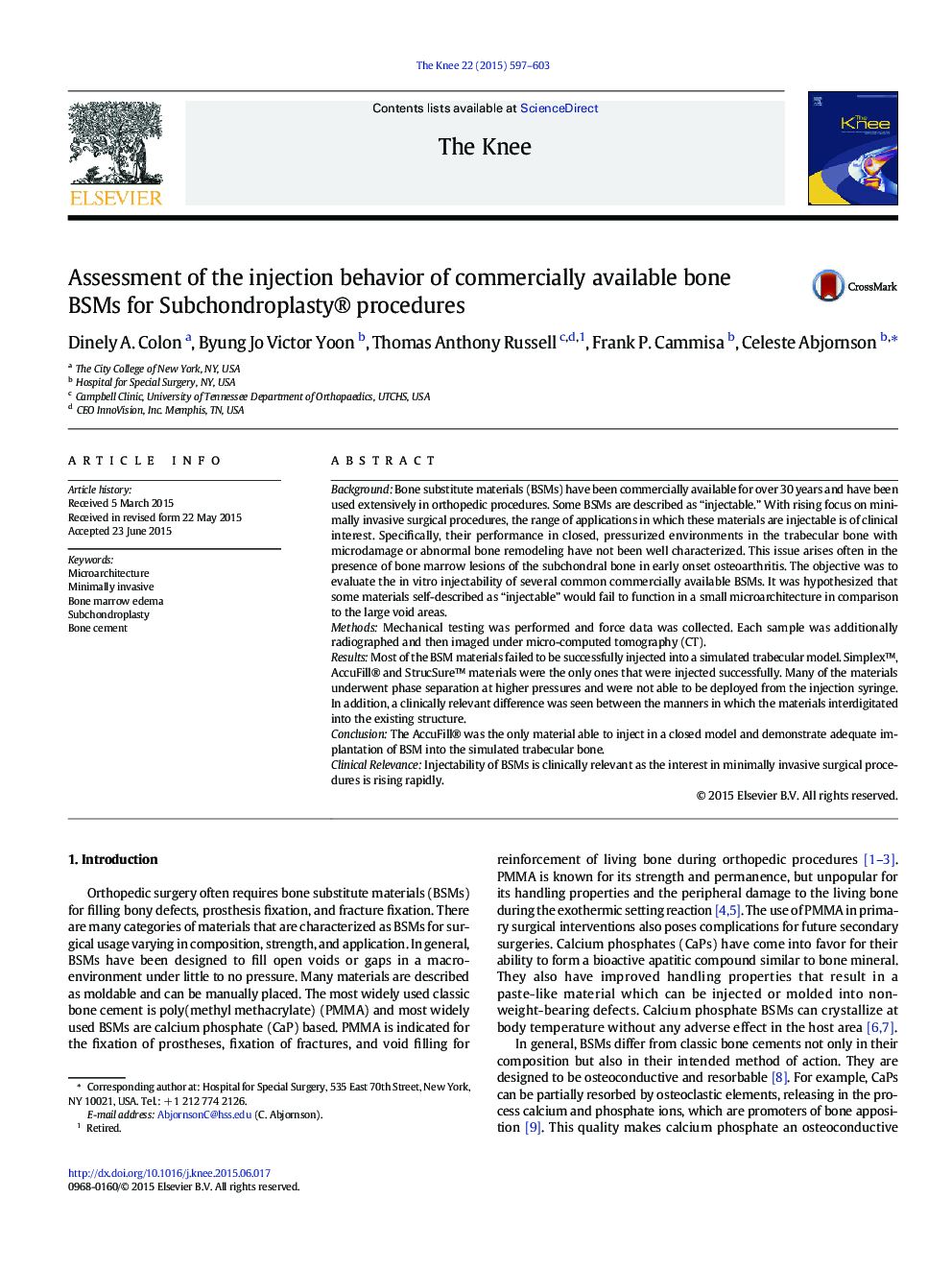| Article ID | Journal | Published Year | Pages | File Type |
|---|---|---|---|---|
| 4077370 | The Knee | 2015 | 7 Pages |
•Eight commercially available BSMs were evaluated for their in vitro injectability into a small pore microarchitecture.•Some commercially-available materials described as “injectable” failed to function in a small microarchitecture.•Mechanical testing and micro-CT showed statistically significant differences between the materials tested.•AccuFill® was the only material able to inject in a closed model with the best over fill pattern at the lowest forces.
BackgroundBone substitute materials (BSMs) have been commercially available for over 30 years and have been used extensively in orthopedic procedures. Some BSMs are described as “injectable.” With rising focus on minimally invasive surgical procedures, the range of applications in which these materials are injectable is of clinical interest. Specifically, their performance in closed, pressurized environments in the trabecular bone with microdamage or abnormal bone remodeling have not been well characterized. This issue arises often in the presence of bone marrow lesions of the subchondral bone in early onset osteoarthritis. The objective was to evaluate the in vitro injectability of several common commercially available BSMs. It was hypothesized that some materials self-described as “injectable” would fail to function in a small microarchitecture in comparison to the large void areas.MethodsMechanical testing was performed and force data was collected. Each sample was additionally radiographed and then imaged under micro-computed tomography (CT).ResultsMost of the BSM materials failed to be successfully injected into a simulated trabecular model. Simplex™, AccuFill® and StrucSure™ materials were the only ones that were injected successfully. Many of the materials underwent phase separation at higher pressures and were not able to be deployed from the injection syringe. In addition, a clinically relevant difference was seen between the manners in which the materials interdigitated into the existing structure.ConclusionThe AccuFill® was the only material able to inject in a closed model and demonstrate adequate implantation of BSM into the simulated trabecular bone.Clinical RelevanceInjectability of BSMs is clinically relevant as the interest in minimally invasive surgical procedures is rising rapidly.
